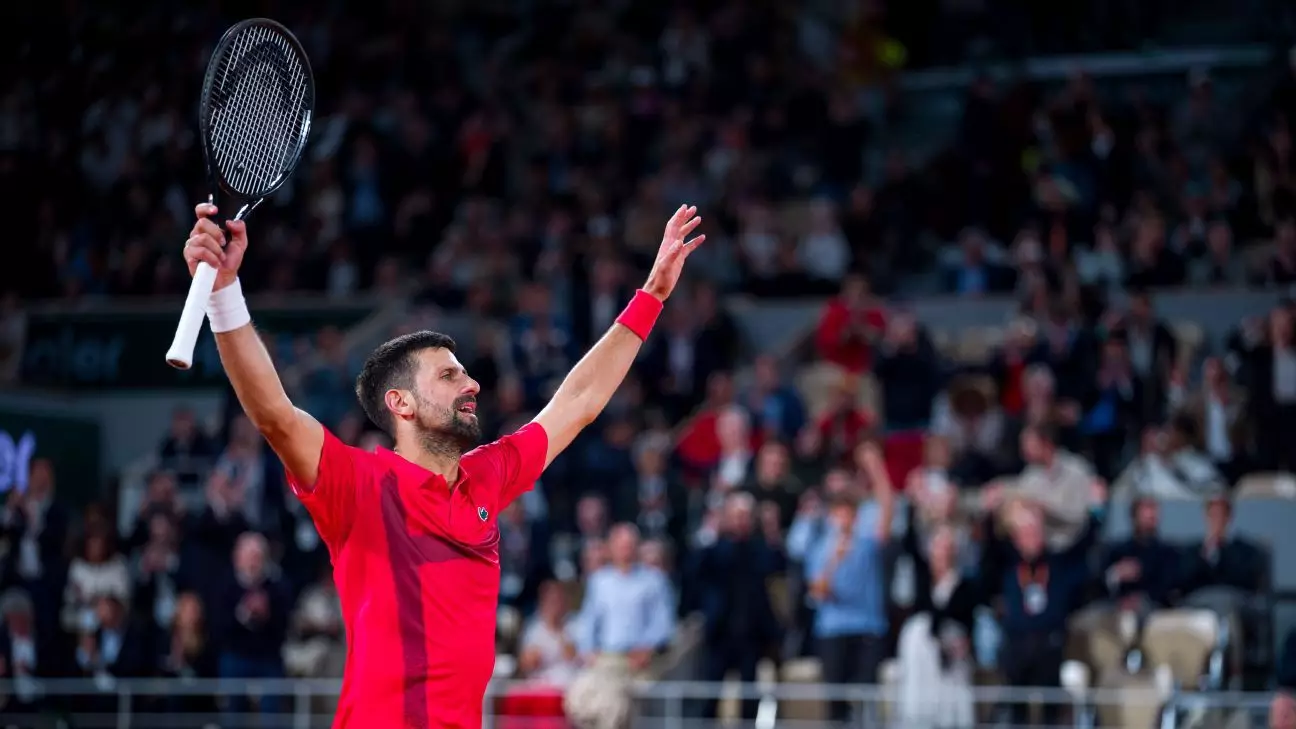Unstoppable Resilience: Novak Djokovic’s Path to Glory at Roland Garros
In the exhilarating world of sports, stories can change in the blink of an eye. Few embody this dynamic spirit more than Novak Djokovic. As he stepped onto the courts of the French Open, whispers of doubt lingered in the air. Despite celebrating his 100th ATP title just before the tournament, many questioned his age and physical condition at 38. Yet, as always, Djokovic has risen above the noise. His recent triumph over Alexander Zverev in the quarterfinals is a testament to his enduring prowess, reigniting conversations about his potential for another major victory.
For those who have followed Djokovic’s career, this isn’t surprising. His journey has been one of relentless perseverance and adaptability. Each match at Roland Garros adds another layer to his storied legacy. As he claimed his place in an astonishing 51st Grand Slam semifinal, it was clear—Djokovic is not just playing tennis; he’s crafting a saga of resilience and excellence that inspires seasoned players and young aspirants alike.
The beauty of Djokovic’s path is not just in his victories but in how he achieves them. His performance against Zverev was more than a win; it was a display of tactical genius and mental strength. This journey through Roland Garros is a reminder that while age may be a number, determination and strategy are timeless companions on the road to greatness.
Key Takeaways
- Novak Djokovic’s resilience is a defining trait that propels him through challenging matches.
- His ability to adapt strategically during games showcases his high tennis IQ.
- The upcoming matches will test his skills against top-ranked players like Jannik Sinner and potentially Carlos Alcaraz.
- Djokovic’s journey is an inspiration to athletes and fans who admire perseverance and skill.
A Tactical Masterclass Against Zverev
Djokovic’s encounter with Alexander Zverev was a thrilling blend of drama and strategy. Initially, things seemed shaky as he lost his opening service game. However, true to form, Djokovic showcased resilience by switching rackets—a symbolic gesture of his commitment to overcoming adversity. Despite a modest 52% first-serve rate initially, he honed his focus and improved dramatically to serve at 78% in the third set alone. This shift was pivotal in regaining control of the match.

The Serbian champion leveraged his serving prowess to maintain dominance, employing diverse tactics like serve-and-volley strategies and varying pace to keep Zverev on edge. These tactics forced Zverev into handling Djokovics’ cunning drop shots—a less heralded but crucial aspect of Djokovic’s game that proved decisive during their face-off. With each point, Djokovic demonstrated why he remains a formidable presence on the court.
Strategic Adjustments and Mental Fortitude
Adaptability has always been one of Djokovic’s greatest strengths, and this match was no exception. Initially vulnerable to Zverev’s powerful returns, Djokovic quickly adapted by positioning himself closer to the baseline. He used drop shots and slices effectively to draw errors from Zverev, unsettling him further as the match progressed. By the third set, Zverev appeared visibly rattled as Djokovic’s strategic variations took their toll.
This strategic brilliance wasn’t just about physical execution but also mental stamina. During tight rallies—like an intense 41-shot exchange—Djokovic maintained composure and focus. His execution wasn’t merely about overpowering his opponent physically but mentally as well. This dual threat made him an even tougher competitor, showcasing both his fitness levels and mental resilience under pressure.
Mounting Challenges Ahead
Even as Djokovic basks in his victory over Zverev, challenges loom large on the horizon. The upcoming semifinal against world No. 1 Jannik Sinner is particularly daunting. Given Sinner’s recent success against him in their past three encounters, Djokovic must prepare meticulously for this match-up which promises complexity and intensity. His knack for proving doubters wrong will be put to the test once again.

If Djokovic surpasses Sinner’s challenge, another formidable opponent awaits—Carlos Alcaraz, known for his emerging dominance on the court. Historically speaking, no player has ever defeated the top three seeds consecutively to clinch a Grand Slam title. This statistic underscores the enormity of what lies ahead for Djokovic—not just reaching the finals but potentially making history with another win.
The Heart of a Champion
This year’s Roland Garros journey paints a vivid portrait of Novak Djokovic—the heart of a champion beating strong amidst challenges new and old. His unyielding resilience combined with tactical mastery and mental composure solidifies why he is revered across generations of tennis enthusiasts worldwide. Regardless of what unfolds in upcoming matches, Djokovic’s ability to defy odds serves as inspiration—not just within tennis circles but beyond them too.

As we watch this narrative unfold at Roland Garros with bated breath one thing remains clear: The final chapters regarding Novak Djokovics’ competitive saga are still unwritten yet being penned with unwavering determination every step along this journey—the legacy continues inspiring all who witness it unfolding live before our eyes.
Novak Djokovic
Roland Garros
Tennis Resilience
Grand Slam Journey


Leave a Reply